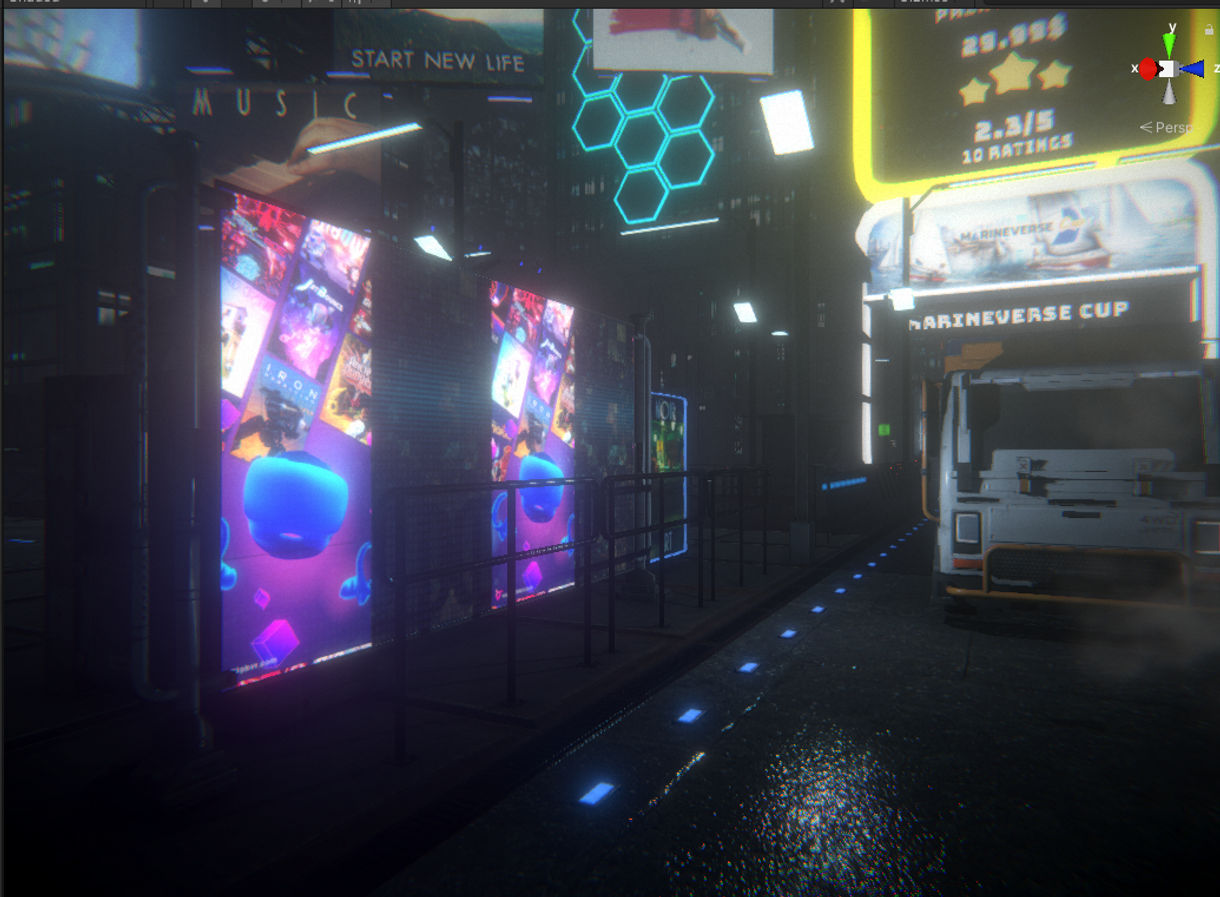
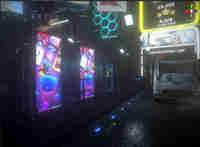
Interactions & browsing.
For interacting with the UI I opted for pinch and drag. This gesture is really easy to execute, quite precise, and can be performed in a small area, saving you a lot of muscle power over longer usage. In the context of browsing through game stores with information categorized, it made sense to use drag gestures contextually. Games are grouped into categories based on the game genre. The horizontal axis will get you to another “store” category (new games/ trending games/ discounted games).
Zooming in on the Z axis will expand and show all games in the selected category.
This mode lets you scroll through games on the Y axis and shows some relevant information about selected games such as name, price, rating, and game media. I really liked the idea of zooming in. It makes clear to the user what happened and it's quite intuitive to understand how controls will change between different zoom levels.
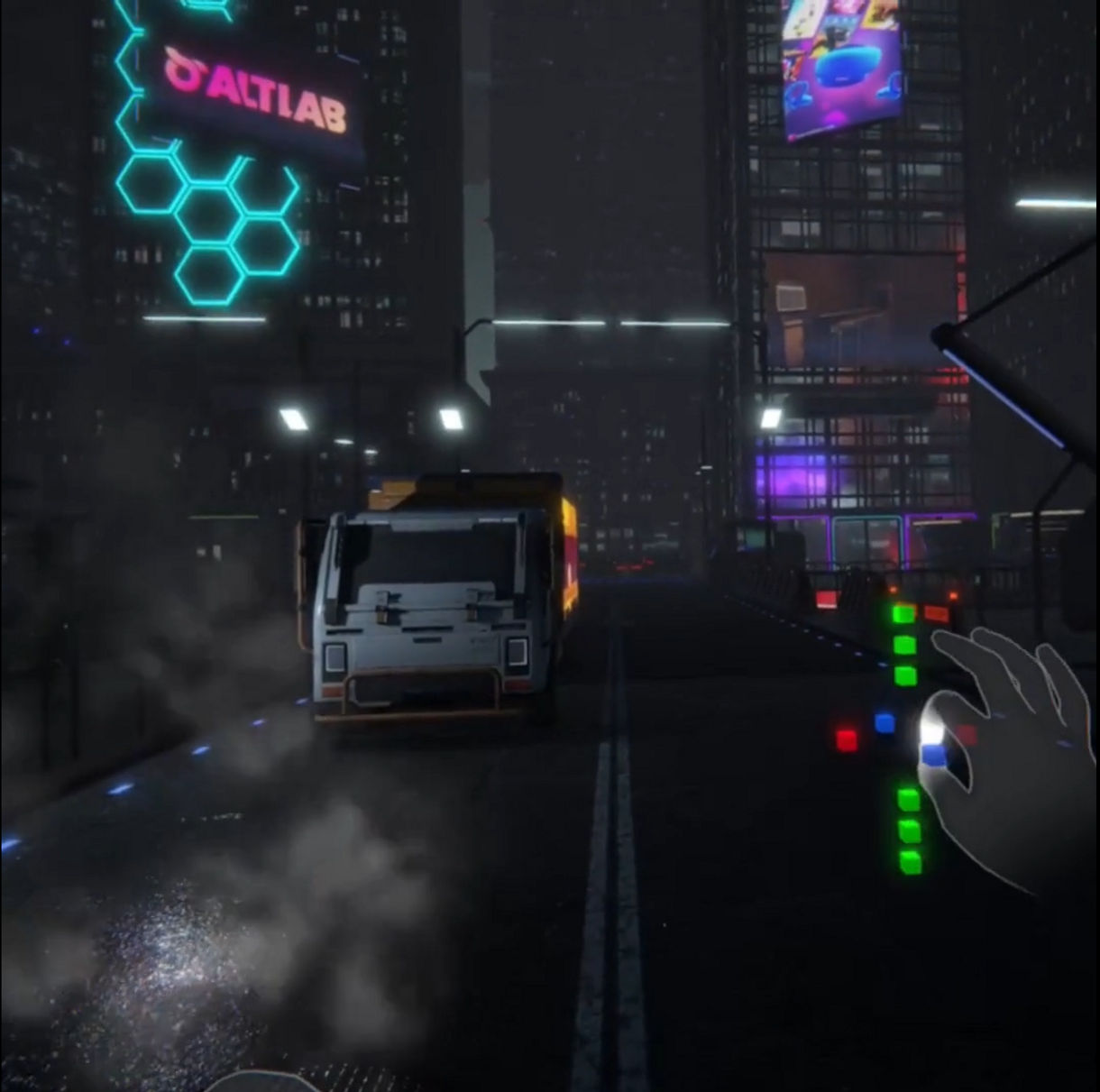

Showing relevant information
Putting crucial information in a virtual environment posed some challenges. If you have too many things to look at, you can easily miss what is important. On the other hand, you can gain a lot of new real estate where to show contextual information. Game trailer, screenshos, nams, price, and rating are placed in the environment to represent where the user is looking most often. You are scrolling through the games with all the relevant information available with just quick glance. Price/rating are right before you on the small panel, requiring a change of focus and head position to look at.
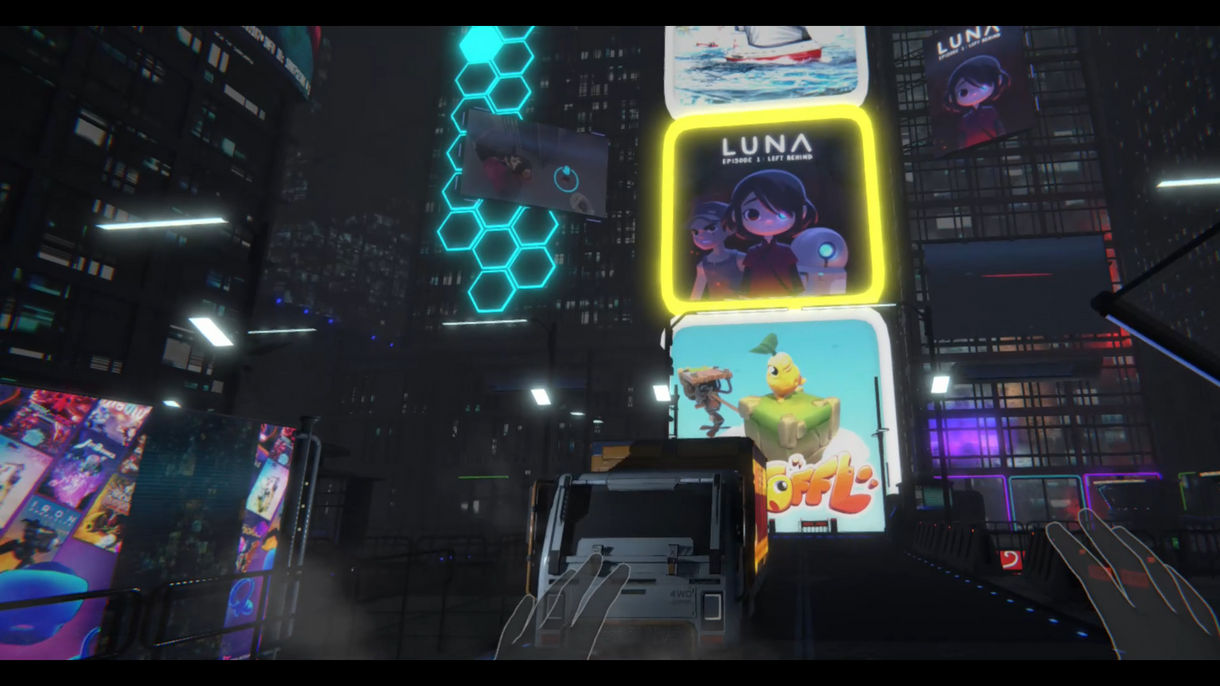

Step inside the game room
Portal to the game detail page. If the game seems like your jam, you want to get some more information before buying it. VR has this long-standing problem that 2D media are really bad at conveying the feeling you get once you step into the VR game world. Game detail that is created in VR, themed to the actual game. Here you can also more closely explore game assets, screenshots, price and reviews in a novel way.


Interactions in the game room
Here, the room is separated into 3 different areas. The first area contains a TV with a game trailer playing and framed screenshots decorating the wall. Players can control trailer playback, pause it and examine screenshots more closely. The next area contains some interactive elements from the game itself. In this case, there is a collection of weapons notorious for Ghost of Tabor. Players can pick up the gun and have a bit of fun shooting around. The last area contains user reviews in the form of avatars that other players recorded with their opinions expressed about the game. Here you read or listen to the review and base your buying decision on those little avatars. Lastly, there is a game orb that you put into your watches that activates the buy menu right in your palm.
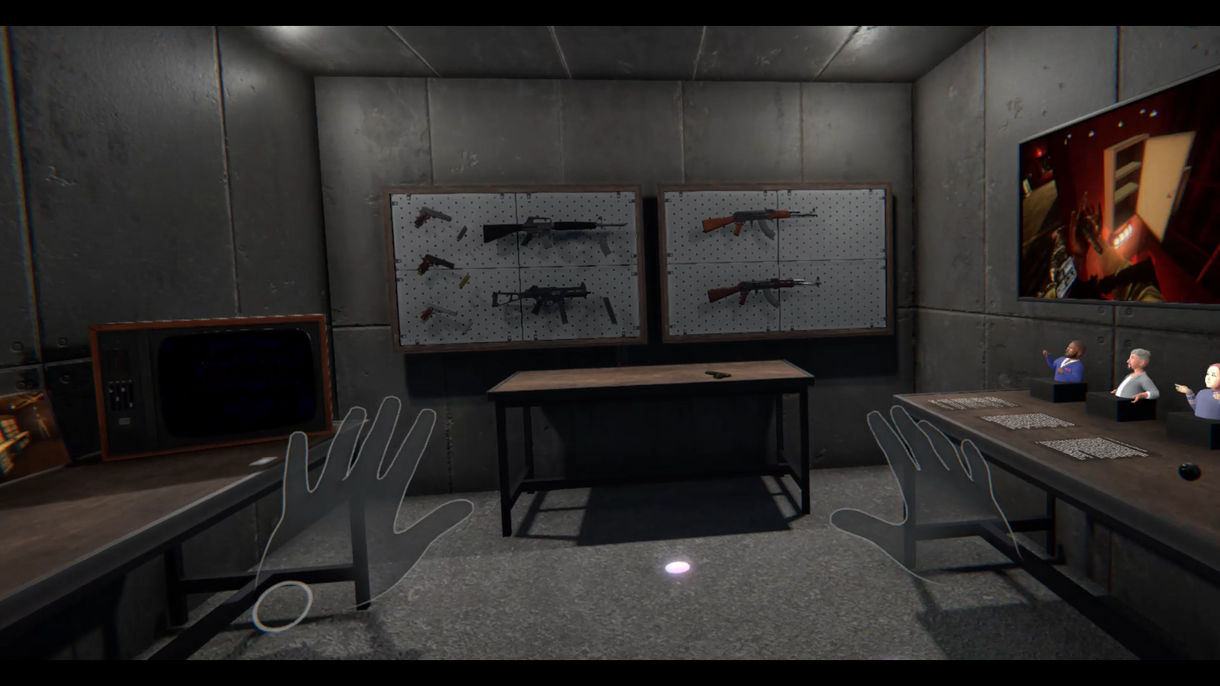
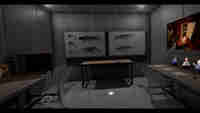
Conclusion
Here I attempted to imagine how the game store transferred from a 2D app to a full 3D VR app with hand interactions. There are still a lot of challenges to figure out but there is a lot to gain especially for VR content. This was created using Unity and captured on PC with Quest 2 connected through a link cable.
Full video here.







